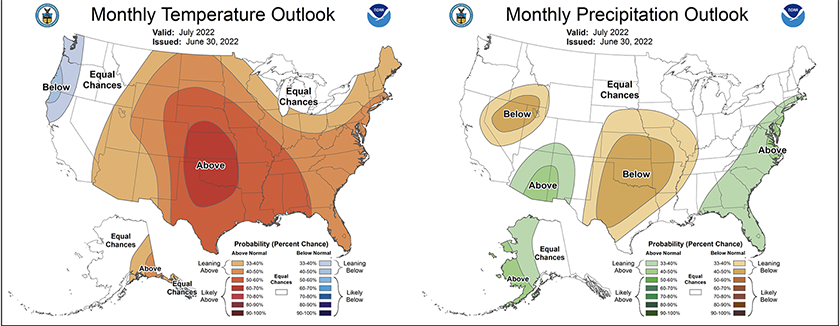July Farm Country Forecast: Hot Like a Firecracker
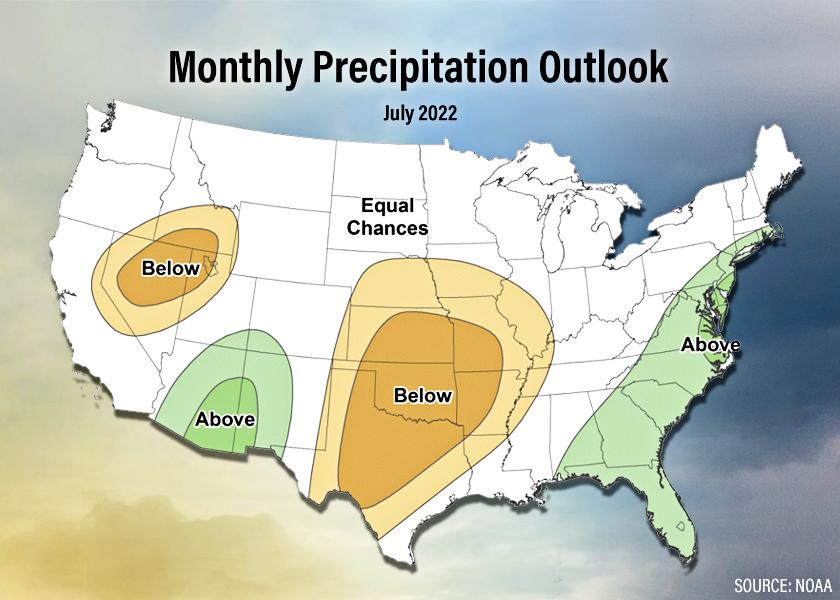
Unfortunately, the heat, humidity and dry conditions of early summer look to extend into the next few months.
Widespread moderate drought and abnormal dryness continued to form and expand across a large swath of the eastern U.S. this week, according to the U.S. Drought Monitor. In addition, a few areas of severe drought are expanding.
Spotty rain and storms occurred across the East, but in areas that missed out on heavy rainfall, high temperatures, browning lawns, and curling corn signaled that rapid drying was taking place.
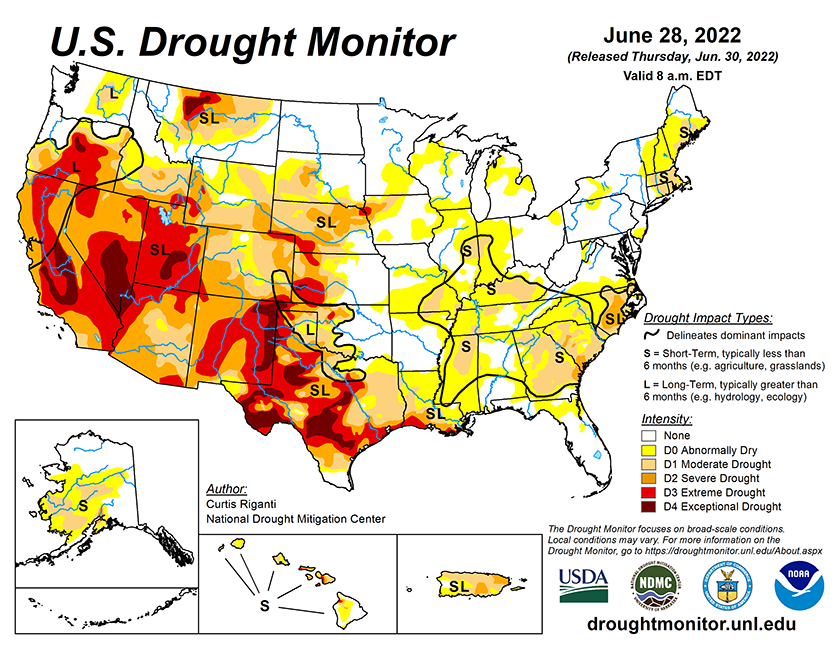
Watch AgDay’s Weather Forecast for July and beyond:
For July, Matt Yarosewick, AgDay meteorologist, says to expect above-normal temperatures over most of the lower 48 states, from parts of the central and southern Rockies down through the Southwest through much of Texas and the Gulf Coast.
“Then if we look at the precipitation through July, expect drought to keep growing east of really Texas, Kansas and Oklahoma up into the Midwest parts and into of the Corn Belt,” he says.
For August, September and October, Yarosewick says most of the country will see above or well-above normal temperatures.
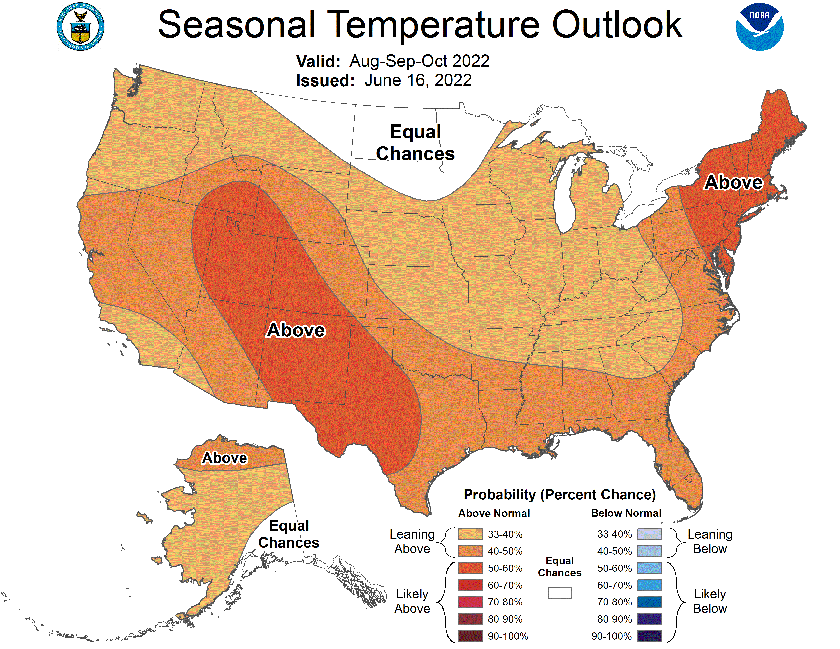
In terms of precipitation, he says the July conditions of below-normal showers and storms will continue through early fall.
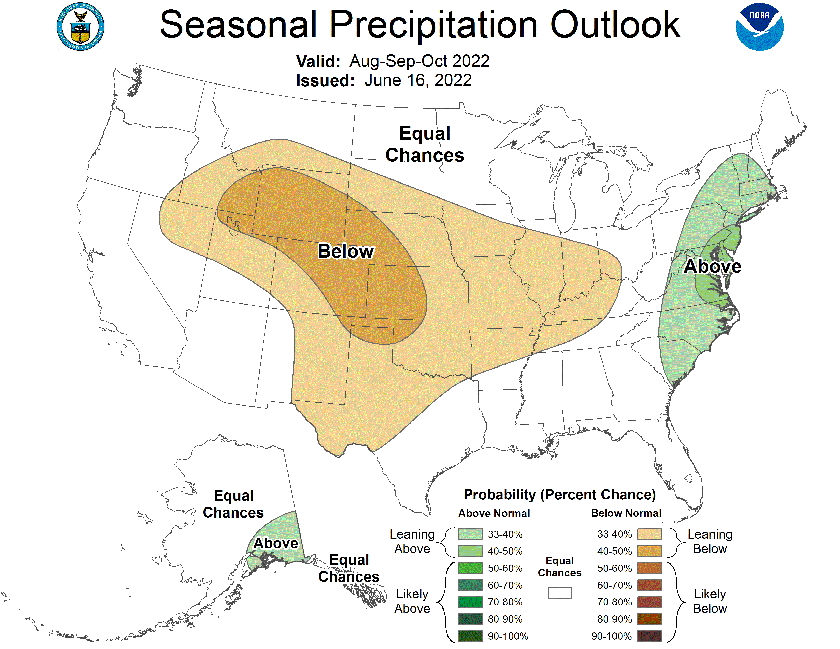
“It will be very, very dry right in the center of the country and even back into the northern Plains and Northern Rockies,” he says. “That could really amplify the drought, especially as we head all the way through this harvest season. As we get closer to harvest, things are going to really start to dry out, unfortunately.”
The U.S. Seasonal Drought Outlook shows soil moisture has decreased considerably across the Mississippi Valley and central Corn Belt, increasing vulnerability to short-term rapid drought development through July.
Given the forecasts favoring above-average temperatures, drought developing in this region would be favored to persist through the end of September, according to the Climate Prediction Center.
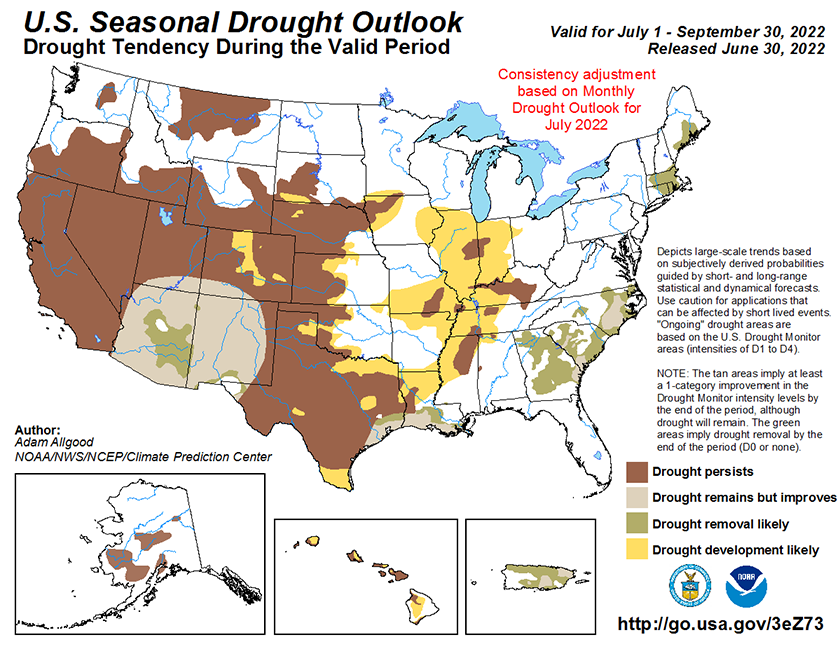
Read More
Dry Weather Status in 4 Maps: Could We See a Flash Drought?
Summer Solstice Sparks Beginning of Flash Drought in the Midwest
Third Year of La Niña on the Horizon as Drought Continues in the Plains


